Microraptor Moulted Just Like Many Modern Birds
Evidence of Sequential Moult Identified in Microraptor gui
A team of Israeli scientists in collaboration with colleagues from China have found evidence in the holotype specimen of Microraptor (Microraptor gui) that this flying dinosaur sequentially moulted its feathers. All living birds have to replace their feathers periodically in order to maintain their function, feathered dinosaurs underwent the same process to. The way in which the feathers are shed and replaced provides palaeontologists with an opportunity to infer habits and behaviours about a long extinct animal.
The Holotype Fossil Material of Microraptor gui
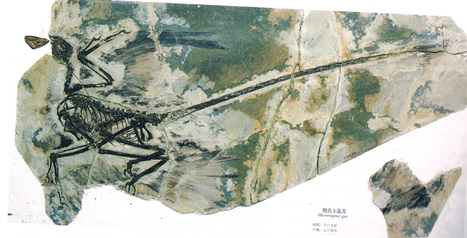
Writing in the academic journal Current Biology, the scientists from the University of Haifa, the Society of Protection of Nature and the Jerusalem Bird Observatory (Israel), along with co-workers from the Chinese Academy of Sciences identified signs of sequential moulting on the fossilised wing of Microraptor gui.
Moulting Strategy Links to Habitat Selection and Flight Ability
Living birds generally moult their feathers in one of three main ways or strategies:
1). A gradual direct replacement of all flight feathers in a slow moult with both wings showing similar stages of moult at the same time – referred to as sequential moulting.
2). Simultaneous replacement of all the flight feathers – referred to as simultaneous moulting.
3). A gradual, but not ordered moult in which feather replacement has no predictable sequence or direction – referred to as an irregular moult.
Different Moulting Strategies Identified in Extant Birds
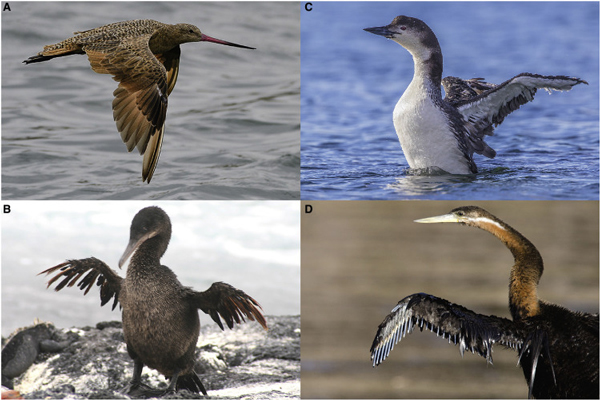
Picture credit: Kiat et al plus Gartner, Salmond, S. P. d’Entremont, Francey (Journal of Current Biology)
Moulting Strategies
In total, the moulting strategies of 302 living bird species were studied, including active fliers and ground-dwelling birds incapable of powered flight. These findings were than applied to the feather arrangement, composition and morphology as found in the wing of the Microraptor gui holotype specimen. The researchers were unable to distinguish between simultaneous and irregular moulting (strategy 2 and 3), so they confined their study to a direct comparison between sequential moulting (strategy 1) and non-sequential moulting (strategies 2 and 3).
The moulting strategy adopted by a bird species impacts on their ability to fly and provides clues about their habitat.
For example, those birds that spend much of their time in the air or live in habitats which are open with few hiding places to help them avoid predators, sequential moulting tends to be adopted. This ensures that the birds can still fly even during moulting. Birds that do not fly frequently, or that have access to plenty of hiding places in their habitat so that they can avoid detection by predators tend to shed a large number of feathers simultaneously and have a relatively rapid moult, typically no more than 2-3 weeks, but if they are a volant species their ability to fly is severely impeded during this time.
The Implications for Microraptor gui
A detailed examination of the wing feathers preserved on the holotype specimen of Microraptor led the researchers to identify six feathers of differing sizes (a-g in the diagram below). These feather lengths were in a sequence indicating that Microraptor moulted gradually and sequentially.
Evidence of Sequential Moulting in Microraptor (M. gui)
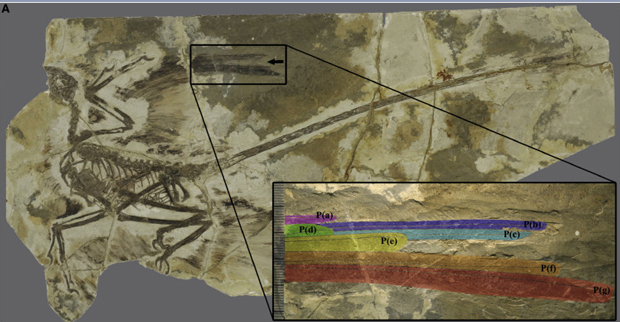
Picture credit: Kiat et al (Journal of Current Biology)
This suggests that Microraptor probably spent a considerable portion of each day in the air and that it needed to be able to fly to avoid predators and to forage for food. Furthermore, Microraptor required this capability on a daily basis, including during the moulting process.
Wing Moult (Sequential Shedding) in Microraptor
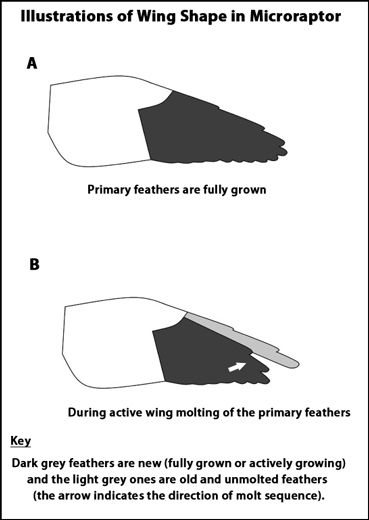
Picture credit: Kiat et al (Journal of Current Biology) with additional annotation by Everything Dinosaur
Microraptor gui Demonstrating Sequential Moulting
Microraptor is the earliest known feathered vertebrate to demonstrate sequential moulting and this suggests that this strategy is nested very deep within the Maniraptora lineage that led to the evolution of birds. It likely maintained its flight ability throughout the entire year. These findings support the hypothesis that Microraptor was a strong, capable flier. The researchers conclude that flight was essential for either its daily foraging or escaping from predators and that sequential moulting is the outcome of evolutionary pressures to maintain flight capability throughout the entire annual cycle in both extant birds and non-avialan paravian dinosaurs from 120 million years ago.
Microraptor Probably Sequentially Moulted Which Infers it was a Strong Flier
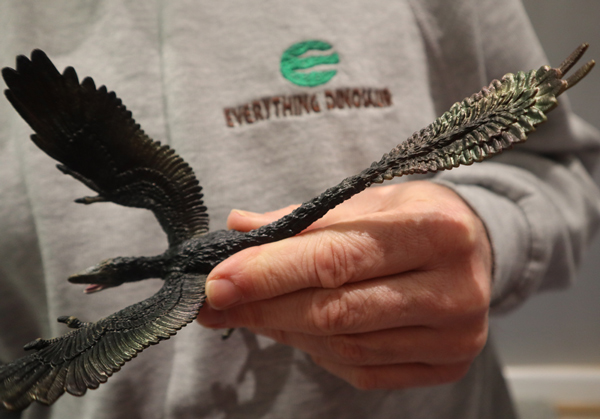
Picture credit: Everything Dinosaur
The picture (above) shows a CollectA Deluxe Microraptor model.
To view this range of models and figures: CollectA Deluxe Prehistoric Life Figures.
The scientific paper: “Sequential Molt in a Feathered Dinosaur and Implications for Early Paravian Ecology and Locomotion” by Yosef Kiat, Amir Balaban, Nir Sapir, Jingmai Kathleen O’Connor, Min Wang and Xing Xu published in the journal Current Biology.
The Everything Dinosaur website: Visit Everything Dinosaur.

